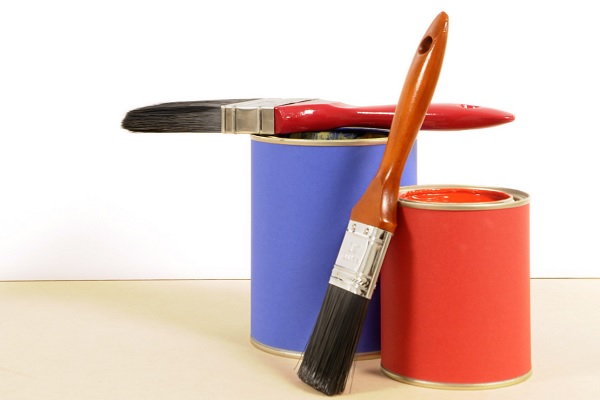Power costs and the issues associated with them, particularly in South Africa, are ever increasing. You can’t live without power so the only alternative to paying these exorbitant prices is to lessen the amount of power that you use from the grid. A great way to do this is to find yourself some good quality solar panels for sale. The problem is solar panel kits can be quite expensive so why not build one yourself? DIY solar panels are possible because the most expensive part, the solar cells, are becoming cheaper all the time.

This article will show you how you make DIY Solar panels for home use.
Step 1: Creating the solar panel
1. Purchase the cells.
Step one is to get yourself some solar cells. These cells are what convert the sun’s rays into usable electric energy. There are a few different kinds of cells for DIY solar panels. Depends on what kind of output you need, you will be able to see the specs on the cells at the store you get them from. If you don’t really know what to get then the most cost effective solar cells are the polycrystalline cells. You will get the most output for the cheapest price with these kind of solar cells. It will probably be easier to source these online as they are specialist items, and make sure you buy a few extra as these cells are incredibly fragile.

If there is wax on the cell, some manufacturers do this, just submerge the cells in hot but not boiling water for a short while.
2. Measure and cut the frame
Now you need something to mount the cells to. Find yourself some thin material. Make sure its non-conductive however as conductive material will cause the unit to get very hot and possibly ignite the panel or cause it to burn out.
Once you have a suitable material then lay it down and put your cells down on it. Measure this and cut the board to size. Please make sure that you leave about a 5 cm gap at both sides of the board so you have some space for wiring.

3. Measure and cut your tabbing wire
Grab one of your polycrystalline cells and place it facing down. You will see quite a few guide lines running in one direction and then two larger guide lines moving in another direction. You will run your tabbing wire down the larger guide lines that will then be connected to the back of the next solar cell.
To measure your tabbing wire. Measure the length of the larger guide line and then double that and cut two pieces of tabbing wire to that size for every cell you are going to use.
4. Flux your work area
Now you will put down the flux to stop the heat from the soldering to cause oxidation. Use a flux pen on every strip of cells. You can run about two to three lines of flux down the length of the cell strip.
5. Solder your tabbing
Now melt a slim strip of solder on the back of your cells with a soldering iron. You can buy pre-soldered tabbing. This is better as it saves time and wastes less solder but it is more expensive.
6. Bond the tabbing wire to solar cells
Use your soldering iron once again here. Heat only the first half of a cut piece of tabbing wire and bond it to the cell. Now do this for every single cell you want to install.

Your solar cells are now ready to be put together.
Remember, if you feel that this project is a little too big to take on, you can always find solar panels for sale on Junk Mail.

Step 2: Connect your solar cells
1. Attach the cells to your board
Put a little bit of glue onto the back of each cell and attach it to the board. The tabbing wire needs to run in a straight, single line down the middle of each cell row. The wire needs to sit between the the cells and need to be free to move around. Only two pieces of wire should be visible between each cell. Your tabbing wire will need to run in opposite directions down each row. So this means that the tabbing wire will stick out at the bottom of one row and the will stick out at the opposite side of the next row of cells.

To make this easier, run the cells in elongated rows with a fewer number of rows. As an example you could have four rows of 16 cells placed next to each other. Also don’t forget to leave some space at both ends of your board for the rest of your solar panel kits wiring.
2. Solder the cells together
Put flux lengthways down the contact pads on the side of the cells. Take the free hanging tabbing wire and solder them to the adjoining cell down the entire length of the cell row. Your wire should connect to the back of once cell and then to the front of the next solar cell and you should have one left over that sits on the end of the cell row.
3. Connect the first row of cells with a bus wire
At the beginning or your first cell row, solder some tabbing wire to the front of the first cell on the next row. This should be about 3cm longer than the guide lines that we spoke about earlier, and should point towards the gap on the side of the board.
Join this wire with the wire you have left over from the previous step by using some bus wire that will run down the entire length of the solar panel.

4. Connect the second row of cells
You should now connect the end of your first row to the beginning of the next row with more bus wire that you will have to extend to the next set of exposed wires along your cell row. Now attach some tabbing wire to the first cell of the next row as you should have done in the previous step.
Connect all four of these wires to your bus wire.
5. Connect the rest of the cells
Carry on connecting the cell rows with your long bus wire until you reach the end and then attach the last piece of tabbing wire to the bus wire to complete the circuit.
You should now have a fully wired solar panel that can be connected to a diode to turn the panel on and off…it’s time to make it look good before we do this.
Step 3: Constructing the housing
1. Measure the cell’s panel
Put you newly created solar panel on the board to measure the size you need to cut. The box you make needs to be at least this big but keep in mind that you should add about 2 cm to each side. You need some space at the corners of your box for the bus wiring to bend around.
If you’ve make it too big, you can always make it smaller.
2. Cut a level panel backing
The next step in creating your DIY solar panels involves cutting the back of the solar panel box. Cut out a piece the same size as the measurements you took above, including the space for the wiring. Use whatever tool you feel comfortable with to cut this out. A table saw or jigsaw will do the trick.

3. Close up the sides of the panel
Measure out two 2.5cm x 5cm pieces of non-conductive plank to the same length of the sides of the panel you have cut out. Then measure out two other 2.5cm x 5cm pieces of non-conductive plank that will fit in-between these pieces so the edges are square.
Connect these planks together. You can use deck screws and butt joints and connect this frame to your back panel. You can also use deck screws here. The amount will depend on the length of your solar panel.
4. Paint the housing
Paint your box to whatever colour you choose. You might want to stick to your cooler colours as this will reflect more light and allow the cells to perform better. Make sure you use outdoor paint if you plan on putting the solar panel outside.
5. Attach the solar panel to your housing
Glue the solar unit onto your precut back board and then secure everything together. Make sure you have two holes in the panel so your final bus wire ends can stick through.
You will seal the solar panel in later with some plexiglass.
Step 4: How to wire the DIY solar panels
1. Connect the final bus wire to a diode
Buy a diode that has a bigger amperage than the panel and attach it to one of the exposed bus wires and secure it with silicone.
Your lighter coloured side (white striped end) of the diode should be pointing towards the negative end of the charge control (we will explain this a bit later) and the other end to the negative side of your solar panel. This is done to stop electricity from moving back through the solar panels – it’s meant to produce energy, not use it.

2. Connect your other wires
Attach a black wire to the diode then connect that to a terminals block that will need to be mounted to the side of the solar panel housing you have made. Then attach a white wire from the bus wire to the opposite side of the terminal block.

3. Connect the solar panel to your charge controller
You will need to buy a charge controller here. This regulates the charge and limit the electrical current so it can be used in everyday devices. Here you need to pay attention to the connection, negative and positive must be attached correctly. There are coloured wires that come with the controller. These wires must be run from the terminal block straight to the charge controller. The dark coloured wire will need to go from the negative side of the panel to the negative side of the charge controller and vice versa. The input panels on the charge controller are also colour coded to help with this.
4. Connect the charge controller to the batteries
The charge controller needs to be attached to batteries that the solar panel will then charge. You will have to buy a battery that works with the output of your panel depending on its size. Connect this battery to the charge controller by following the instructions that the manufacturer will have included.

5. Turn on your solar panel
Your batteries are now charging from the sun’s rays. This can be connected to your electronics and depending on the size of the panel and battery you use, you will be able to charge and run a variety of devises.
If wiring isn’t really your thing, why not find solar panels for sale on Junk Mail?
Step 5: Seal your solar panel into the housing
1. Find a piece of plexiglass
Get some plexiglass cut to the size of the box opening that your panel was made to. You can get this from most specialty shops and or many hardware stores around South Africa. DO NOT use normal glass. Glass will break and chip if exposed to the outside world.

2. Attach your block stops
Cut out 2.5 x 2.5 cm blocks of wood to fit into the corners so the plexiglass doesn’t touch the solar panel cells. Please remember to put these high enough so the plexiglass is suspended but low enough so your plexiglass sits flush with the lip of the box you have made. It will be about the same thickness as your plexiglass. Glue these pieces of wood into position.
3. Insert the plexiglass
Sit the plexiglass onto the wooden block stops and drill it into place by drilling a screw right through the plexiglass into the stop blocks.
4. Seal the solar unit
You can now seal the unit by using clear silicone on the edges. Seal up any gaps in the material as it needs to be watertight if you will be exposing this to the outside world.
Looking for solar panel kits that will make your job easier? Why not browse Junk Mail for awesome deals?
Step 6: Mounting your DIY solar panels
There are three ways that you could mount the solar panels for home use.
1. Mount it on a mobile cart
If you have a cart with sturdy wheels that you are no longer using…You can mount the solar panel to this. Make a swinging bracket that can adjust so you can move the panel as the sun’s rays change angle and intensity.
2. Mount it on your roof
This is probably the most common way of mounting the solar panel as it’s probably the least intrusive form of mounting with regards to the design of your home. Make sure the solar panel cells are exposed to the sunlight for as long as you can. As this is a stationary mount, you won’t be able to change the angle. Make sure you get the best exposure possible.

3. Mount it on a stand
The last option is to mount the solar panel to a stand that sits on your lawn. The nice thing about this is that you can easily clean the panels and if you build the mount properly, you will be able to change the direction that the solar cells are pointing in. This option works if you have a lot of extra space that you are not using.
So there you have it – a helpful guide to complete and install your DIY solar panels.
ARVE Error: src mismatchprovider: youtube
url: https://www.youtube.com/watch?v=2PuoSkn3snY
src in org: https://www.youtube-nocookie.com/embed/2PuoSkn3snY?feature=oembed&wmode=opaque
src in mod: https://www.youtube-nocookie.com/embed/2PuoSkn3snY?wmode=opaque
src gen org: https://www.youtube-nocookie.com/embed/2PuoSkn3snY
You now know how to build a solar panel, if you want to find some solar panels for sale, then Junk Mail Classifieds is the place to look. We have a wide range of solar panels for home and solar panel kits if you want to build it yourself, but don’t want to source the parts. Selling your solar panels or kits? Place your free advert on Junk Mail today!








Hi. Where can I get someone to erect these solar panels? 0839977776
Hi Clayton,
Click here to see a list of Traders on Junk Mail who list solar services.
Thank you for reading our Blog!
very intresting what are the costs for n whole house
Hi Noel,
This is an informative article only, but please do contact any of the Traders advertising on Junk Mail for a price list.
Thanks for reading our blog!
where can I buy these made up panels. Clay 0839977776